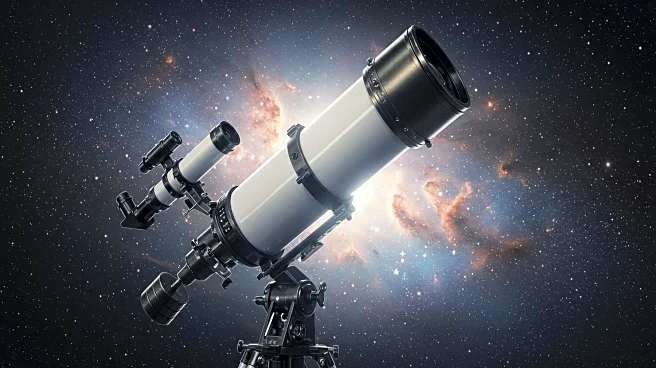What is the story about?
What's Happening?
NASA's James Webb Space Telescope has provided new insights into the exoplanet TRAPPIST-1 d, revealing that it does not possess an Earth-like atmosphere. The study, led by Caroline Piaulet-Ghorayeb, utilized Webb's NIRSpec instrument to search for atmospheric molecules such as water, methane, and carbon dioxide, which are common on Earth. The findings suggest that TRAPPIST-1 d, located 40 light-years away in the TRAPPIST-1 system, lacks these molecules, ruling it out as a potential Earth twin. The TRAPPIST-1 system, known for its seven Earth-sized rocky planets orbiting a red dwarf star, has been a focal point for astronomers seeking habitable worlds. Despite the absence of an Earth-like atmosphere, the study leaves open possibilities for further exploration of TRAPPIST-1 d's atmospheric conditions.
Why It's Important?
The discovery is significant as it narrows the search for habitable exoplanets, providing crucial data on the atmospheric conditions necessary for life. The TRAPPIST-1 system, with its Earth-sized planets, offers a unique opportunity to study the potential for life beyond our solar system. Understanding which planets can retain atmospheres under harsh stellar conditions is vital for future missions aimed at finding habitable worlds. The findings from Webb's observations help refine the criteria for identifying planets that might support life, influencing the direction of future exoplanet research and exploration.
What's Next?
Further observations of the TRAPPIST-1 system are planned, focusing on the outer planets which may have better chances of retaining atmospheres due to their distance from the star. These studies will continue to utilize Webb's advanced infrared capabilities to explore atmospheric compositions and potential habitability. The ongoing research will contribute to NASA's broader efforts to understand the conditions under which life might exist elsewhere in the universe, paving the way for future missions like the Habitable Worlds Observatory.
AI Generated Content
Do you find this article useful?











